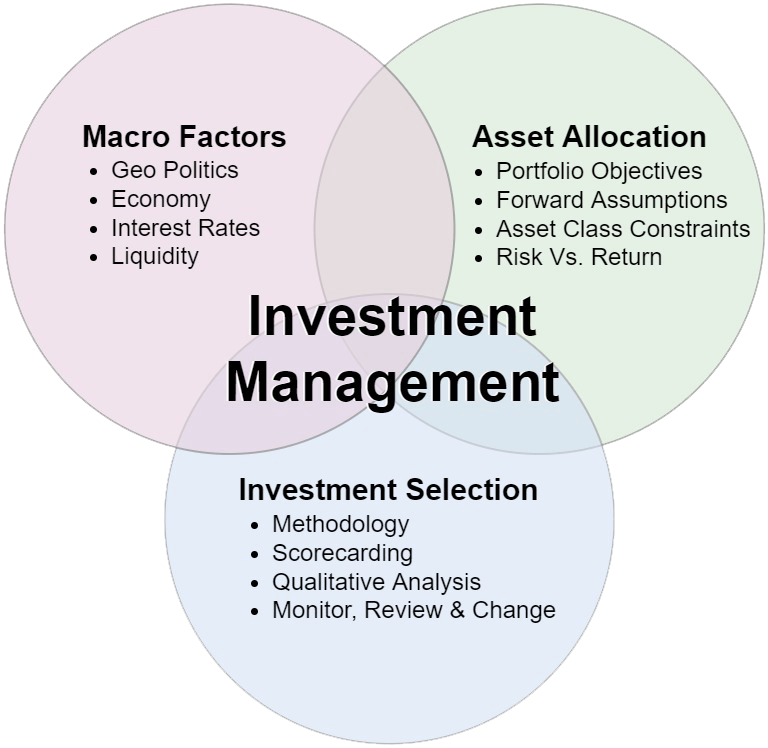Our Carefully Calculated investment methodology
Your goals are unique to you, so we believe your investment strategy should be customized accordingly. We offer access to a wealth of high-quality investment opportunities to fit your objectives, whether they include growth, capital preservation, income or other factors.
Using our extensive experience with the various choices for your portfolio, we can help guide you toward investments that are the right fit for your circumstances.
The methodology for our investment process and investment management is based on the relationship between three interrelated components: macro factors, asset allocation and investment selection.

Macro Factors
- Geopolitics
- Economy
- Interest rates
- Liquidity
Asset Allocation
- Strategy objectives
- Forward assumptions
- Asset class constraints
- Risk vs. return
Investment Selection
- Methodology
- Score-carding
- Qualitative analysis
- Monitor, review and change
Asset Allocation Process
Asset allocation models are determined using forward-looking market assumptions at the asset class level. Each asset class is assigned a base allocation as well as an upper and lower constraint that the forward assumptions cannot allocate beyond to help keep risk at an acceptable level.
Investment Selection
Strategies will be populated with investments that have satisfied the requirements set forth in the selection methodology, which relies on a dual approach: quantitative analysis and qualitative analysis.
The majority of the inputs for quantitative factors aim to reduce the possible investment universe to a manageable list, for which the qualitative factors will then be used to determine which investments will be added to the strategies.
Investment Review
The review criteria is used to determine the continued viability of investments currently being used in strategies, as well as other investments deemed suitable as replacements if needed. The review factors are used to sort each investment into one of three action levels: maintain, watch or review.
There is no assurance that any investment strategy will be successful. Investing involves risk and investors may incur a profit or a loss. Asset allocation does not guarantee a profit nor protect against loss.
In a fee-based account clients pay a quarterly fee, based on the level of assets in the account, for the services of a financial advisor as part of an advisory relationship. In deciding to pay a fee rather than commissions, clients should understand that the fee may be higher than a commission alternative during periods of lower trading. Advisory fees are in addition to the internal expenses charged by mutual funds and other investment company securities. To the extent that clients intend to hold these securities, the internal expenses should be included when evaluating the costs of a fee-based account. Clients should periodically reevaluate whether the use of an asset-based fee continues to be appropriate in servicing their needs. A list of additional considerations, as well as the fee schedule, is available in the firm’s Form ADV Part II as well as the client agreement.
There is no assurance that any investment strategy will be successful. Investing involves risk and investors may incur a profit or a loss. Asset allocation does not guarantee a profit nor protect against loss.

